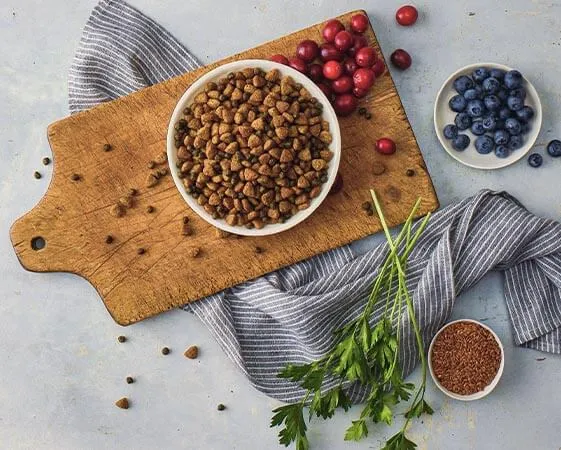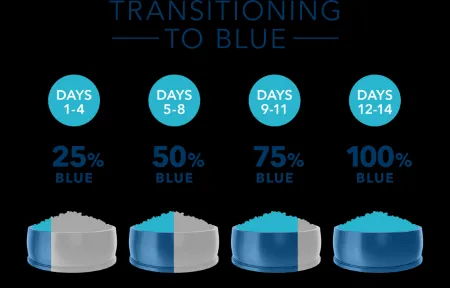Bringing a new puppy into your home is an exciting time, filled with joy and new responsibilities. Among the most crucial decisions you’ll make for your furry companion is choosing the right nutrition. Puppyhood is a critical developmental stage, and providing a diet that supports their rapid growth and energy needs is paramount. For many pet parents, grain-free puppy food has become a popular choice, offering a wholesome alternative to traditional formulas. Understanding the benefits and what to look for in a quality grain-free option can help set your puppy up for a healthy and vibrant life.
Understanding Grain-Free Puppy Food
Grain-free puppy food is formulated without common cereal grains like corn, wheat, soy, rice, barley, or oats. Instead, these diets typically rely on alternative carbohydrate sources such as potatoes, sweet potatoes, peas, and lentils. The primary reason pet owners consider grain-free options is often related to potential sensitivities or allergies their puppies might have to grains, though true grain allergies are less common than often perceived. For puppies with sensitive stomachs or specific dietary needs, a grain-free approach can sometimes alleviate digestive discomfort and support overall well-being.
While not all puppies require a grain-free diet, those with specific sensitivities may thrive on formulas that eliminate common grain-based ingredients. Always consult your veterinarian before making significant dietary changes, especially for a growing puppy.
Key Ingredients in Quality Grain-Free Puppy Formulas
When selecting a grain-free puppy food, the quality and variety of ingredients are crucial. A well-balanced formula will prioritize high-quality protein, complex carbohydrates, and essential fats, along with a rich blend of vitamins and minerals.
Premium Protein Sources
The foundation of any good puppy food should be high-quality animal protein, which is essential for muscle development and overall growth. Look for formulas that list real deboned meat as the first ingredient. Chicken, often paired with chicken meal, provides an excellent source of protein, delivering the amino acids necessary for your puppy’s developing muscles. Chicken meal, in particular, is a concentrated protein source, offering supplemental energy and nutrients.
Wholesome Carbohydrates for Energy
Instead of grains, quality grain-free recipes utilize easily digestible carbohydrates to provide sustained energy. Sweet potatoes and white potatoes are common choices. Sweet potatoes are packed with potassium, B vitamins, beta carotene, and powerful antioxidants like phytochemicals and carotenoids, all of which contribute to immune system support. White potatoes also offer essential vitamins B & C, potassium, iron, and magnesium. These ingredients ensure your puppy gets the energy they need without relying on grains.
Essential Fats and Omega Fatty Acids
Healthy fats are vital for a puppy’s skin, coat, and cognitive development. Fish oil is a powerhouse ingredient, rich in omega-3 fatty acids and DHA (Docosahexaenoic Acid). DHA is especially critical for brain and eye development in young puppies. Omega-3s also help support natural skin and coat health, improve cognitive functions, and contribute to kidney health. Flaxseed is another excellent source of essential omega-3 fatty acids and provides fiber to aid digestion, further promoting a healthy skin and coat.
Antioxidant-Rich Fruits and Vegetables
To bolster your puppy’s immune system, look for formulas that include a variety of antioxidant-rich fruits and vegetables. Blueberries are an excellent source of vitamins C & E, potassium, and fiber, enhancing antioxidant enrichment. Cranberries contribute vitamins C, E, and K, as well as manganese, further supporting overall health. These natural ingredients play a vital role in protecting your puppy’s cells from damage.
 A bag of premium grain-free chicken recipe puppy food, highlighting its wholesome ingredients for growing pups.
A bag of premium grain-free chicken recipe puppy food, highlighting its wholesome ingredients for growing pups.
The “True BLUE” Standard: What to Look For
Beyond specific ingredients, a reputable grain-free puppy food often adheres to a “True Standard” of quality. This typically means:
- Real Deboned Meat First: The number one ingredient should always be real meat, indicating a high-protein formula.
- No By-Product Meals: Avoid foods containing chicken (or poultry) by-product meals, which are often less digestible and nutritious than whole meat sources.
- No Corn, Wheat, or Soy: These ingredients are common allergens for some dogs and are often used as fillers in lower-quality foods.
- No Artificial Flavors or Preservatives: Natural preservation and flavoring are always preferred to artificial additives.
Choosing a food that meets these standards ensures your puppy receives a diet free from common fillers and artificial components, focusing instead on wholesome, natural nutrition. For more information on ingredients, you might explore what can i feed my dog everyday to understand what constitutes a healthy diet.
 An illustration highlighting a blend of antioxidants, vitamins, and minerals essential for a puppy's immune system health and oxidative balance.
An illustration highlighting a blend of antioxidants, vitamins, and minerals essential for a puppy's immune system health and oxidative balance.
Feeding Guidelines for Your Grain-Free Puppy
Proper feeding is as crucial as the food itself. Puppy feeding guidelines are typically based on age, weight, and activity level. These guidelines provide a starting point, but individual requirements may vary significantly. Always observe your puppy’s condition and adjust food portions as needed to maintain an optimal body weight.
General Meal Frequency:
- Until 6 Months Old: Puppies typically benefit from three meals per day to support their rapid growth and high energy demands.
- 6-12 Months Old: As they grow, you can usually transition to two meals per day.
When introducing a new grain-free puppy food, a gradual transition is key to preventing digestive upset. Start by mixing 25% of the new food with 75% of your puppy’s old food, and gradually increase the proportion of the new food over a 14-day period until your puppy is solely on the new diet.
Remember to always have a clean bowl of cool, fresh water available for your puppy at all times. Hydration is vital for all bodily functions, especially for active, growing pups. If you’re considering preparing homemade treats, a soft peanut butter dog treats recipe can be a wonderful, grain-free option. However, it’s also important to be aware of what food items can dogs not eat to ensure their safety.
 A detailed chart outlining feeding guidelines for puppies based on their weight and age, showing daily cup measurements.
A detailed chart outlining feeding guidelines for puppies based on their weight and age, showing daily cup measurements.
What to Avoid in Puppy Food
Just as important as knowing what to include, is knowing what to exclude from your puppy’s diet. Besides the common grain fillers, be vigilant about:
- By-products: Often low-quality ingredients.
- Artificial colors, flavors, and preservatives: These offer no nutritional value and can sometimes trigger sensitivities.
- Excessive fillers: Ingredients that provide little nutritional benefit.
- Certain human foods: Many human foods can be toxic to dogs. For a comprehensive list, consult resources like what vegetables are harmful to dogs and what are some human foods that are good for dogs.
Conclusion
Choosing the best grain-free puppy food involves understanding your puppy’s unique needs, recognizing high-quality ingredients, and adhering to proper feeding practices. A well-formulated grain-free diet, rich in premium proteins, wholesome carbohydrates, essential fats, and vital nutrients, can provide the optimal foundation for your puppy’s healthy growth and development. Always consult with your veterinarian to determine the most suitable dietary plan for your specific puppy, ensuring they receive the superior nutrition required during their formative months. Providing a diet focused on natural, beneficial ingredients is a significant step towards a long, happy, and healthy life for your beloved companion.
